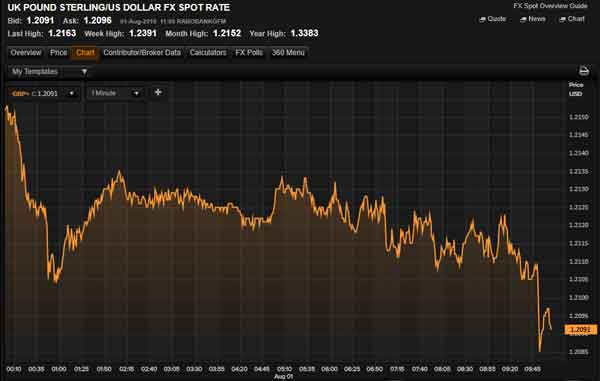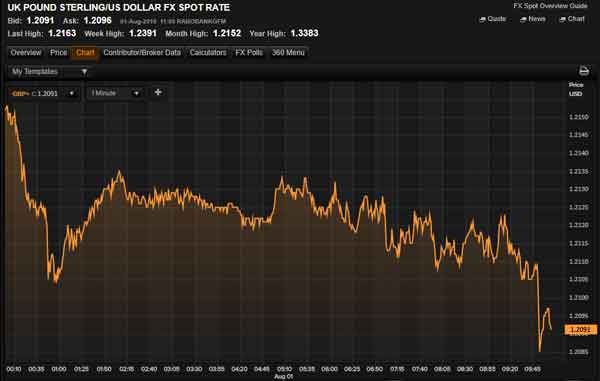With the pound falling below $1.21 and ahead of the Bank of England interest rates decision this morning, Refinitiv have looked back over currency data from 1976 to explore how pound sterling has performed in the markets a week, or 5 working days, following the appointment of a new UK Prime Minister.
Here’s what we found out. Following the appointment of a new PM:
- The biggest rise in the pound came after Gordon Brown’s appointment in 2010 with a rise of 0.85%
- The biggest fall in the pound came after his successor, David Cameron, took office in 2010 as part of the Conservative-Liberal Democrat coalition government with a drop of -4.36%
- The pound was at its strongest when Margaret Thatcher was appointed in 1979
- The pound was at its weakest at the time of Boris Johnson’s appointment – it is also at its weakest compared to any other incoming PM since 1976
- The pound saw three successive and increasing falls in value from 1976 to 1997 upon the appointment of a new PM
Neil Penney, MD and Co-Head of Trading at Refinitiv comments: “Falls in the value of Sterling are not uncommon with a change in Prime Minister. Looking back as far as 1976, this week saw the second largest drop on record – the biggest coming with the appointment of the coalition government in 2010.”
|
Prime Minister |
Date appointed |
£ vs $ on appointment day |
£ vs $ after a working week |
Percentage change (%) |
|
James Callaghan |
5th April 1976 |
1.87 |
1.84 |
-1.40 |
|
Margaret Thatcher |
4th May 1979 |
2.07 |
2.04 |
-1.51 |
|
John Major |
28th November 1990 |
1.97 |
1.93 |
-2.12 |
|
Tony Blair |
2 May 1997 |
1.62 |
1.62 |
+0.03% |
|
Gordon Brown |
27th June 2007 |
2.00 |
2.02 |
+0.85 |
|
David Cameron |
11th May 2010 |
1.50 |
1.45 |
-4.36 |
|
Theresa May |
13th July 2016 |
1.31 |
1.32 |
+0.48 |
|
Boris Johnson |
24th July 2019 |
1.25 |
1.22 |
-2.58 |
Data correct as of close of trading 31st July 2019
£ vs $ this morning:

£ vs $ over last five days:





